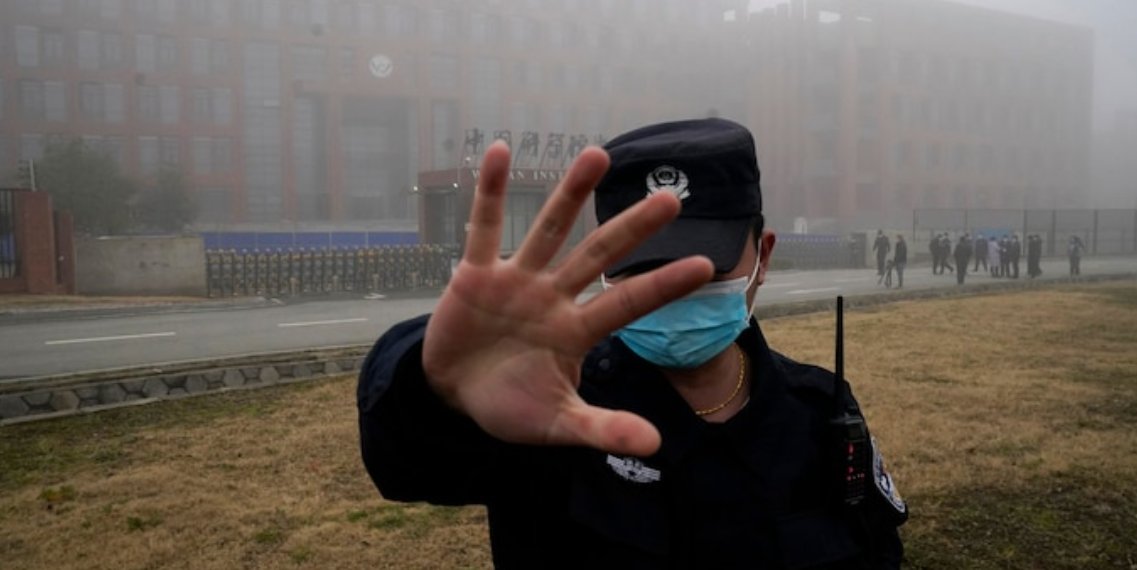by Will Jones, Daily Sceptic:

The evidence that the coronavirus originated in a lab is now compelling, as is the evidence that the virus was spreading undetected all over the world by autumn 2019, with one blood sample from Lombardy found to be positive for both viral RNA and antibodies as early as September 12th 2019.
One crucial outstanding question is who knew what and when. In particular, what did the U.S. know about the virus before January 2020 and what did the Chinese Government know, and what part did each therefore play in driving forward the pandemic emergency?
TRUTH LIVES on at https://sgtreport.tv/
Here I will argue that both the U.S. and the Chinese Communist Party (CCP) knew or suspected that an engineered virus was circulating from mid-November 2019, and that while the CCP was initially not worried about the virus, the U.S. biodefence network was much more concerned. The pandemic emergency was therefore largely created by the U.S. biodefence network, which used it as an opportunity to put into practice all the emergency protocols it had been preparing for two decades to respond to a biological attack or pandemic. While the virus quickly turned out to be mild, the emergency response continued largely because the train had already started running and the opportunity was too good to miss.
If the U.S. and its allies did know anything covertly before 2020, the most likely people who would know it are members of the intelligence and security networks. What, then, can we surmise about what they knew from what they were saying and doing in autumn and winter 2019-20 and from later reports?
Consider Dr. Michael Callahan, an ex-CIA agent who now runs the U.S. Defense Advanced Research Projects Agency (DARPA) and was the U.S. Government’s only confirmed point of contact in Wuhan in January 2020. Out of the blue, Dr. Callahan contacted mRNA vaccine expert Dr. Robert Malone on January 4th 2020 to tell him that (to quote Dr. Malone): “There was a novel coronavirus circulating in the Wuhan region, it was looking like a significant biothreat, and I should get ‘my team’ engaged in seeking ways to mitigate the risk of this new agent.”
Bear in mind that at this point nobody else was spreading alarm about the new virus, which according to the public record had only been sequenced and confirmed to be a novel SARS-like virus by the private Chinese company Vision Medicals on December 27th. Certainly the CCP was not spreading alarm. Prior to the Wuhan lockdown on January 23rd 2020, the CCP was playing down the threat from the virus, suppressing news of it and not making any concerted response. The videos supposedly showing people collapsing in the streets with the virus that went round social media at the time were promoted not by the CCP but by organisations opposed to the CCP, aiming to expose its cover-up of the virus. Most people in the West, too, were not treating the virus as a significant threat and it was barely registering on government agendas. Recall that in early January there were officially just a few people in hospital in Wuhan and no recorded deaths, so any notion that this virus was a major threat to global public health was purely hypothetical – or based on information not in the public domain.
However, Dr. Callahan was not alone in his early alarmism. Others from the U.S. biodefence network were conspicuously alarmist and actively trying to raise a sense of alarm in those around them right from the start of January.
In the White House, Deputy National Security Advisor Matt Pottinger was stoking up the terror. As Michael Senger notes: “Throughout January 2020, Pottinger unilaterally called White House meetings unbeknownst to those in attendance and breached protocol to ratchet up alarm about the new coronavirus based on information from his own sources in China, despite having no official intelligence to back up his alarmism.”
It was Pottinger who brought in fellow alarmist Deborah Birx as White House Coronavirus Response Coordinator at the end of February 2020, who was herself instrumental in pushing the alarmist agenda and bringing lockdowns to America.
The leaked ‘Red Dawn’ emails among U.S. Government officials and others in early 2020 show long-time lockdown proponent Dr. Carter Mecher of the Department of Veterans Affairs also pushing for strong responses from very early on. On January 28th, Mecher wrote: “Any way you cut it, this is going to be bad. You guys made fun of me screaming to close the schools. Now I’m screaming, close the colleges and universities.”
Dr. Mecher is an associate of Dr. Richard Hatchett, formerly of the National Institutes for Health (NIH) and now CEO of the Gates-funded pandemic vaccine organisation CEPI, with whom he wrote a paper in 2007 purporting to use the lessons of the 1918 pandemic to promote social distancing. A sister paper, also funded by the NIH, was produced at the same time by Imperial College’s Professor Neil Ferguson. National Institute of Allergy and Infectious Diseases Director (then and now) Dr. Anthony Fauci commented in 2007 that the two studies underline that “a primary lesson of the 1918 influenza pandemic is that it is critical to intervene early… Nonpharmaceutical interventions may buy valuable time at the beginning of a pandemic while a targeted vaccine is being produced”.
Richard Hatchett happened to be attending the World Economic Forum when China locked down Wuhan on January 23rd 2020. The following day he gave a press conference with Jeremy Farrar, Director of the Wellcome Trust and a board member of CEPI, and Moderna’s CEO Stephane Bancel, backing China’s draconian response and making clear it was straight out of his own playbook.
One thing that is important to understand, is that when you don’t have treatments and you don’t have vaccines, non-pharmaceutical interventions are literally the only thing that you have, and it’s a combination of isolation, containment, infection prevention and control and then these social distancing interventions.
There is historical precedent for their use. We looked intensively and did an historical analysis of the use of non-pharmaceutical interventions in U.S. cities in 1918 and what we found was that cities that introduced multiple interventions, early in an epidemic, had much better outcomes.
The ‘we’ of course here refers to Neil Ferguson and Carter Mecher, as per the above.
Further possible evidence of the involvement of the U.S. intelligence community and biodefence network is that the messages of the ‘whistleblower’ doctor Li Wenliang in Wuhan were initially promoted in English by an organisation funded by the U.S. Government. The flooding of social media with messages promoting lockdown in 2020 was also seen in 2014 with Ebola in Sierra Leone, where it was clearly the work of outside agents. It is also of significance that the same New York Times reporter, Donald McNeil, wrote almost identical articles praising the extreme interventions in both 2014 and 2020.





